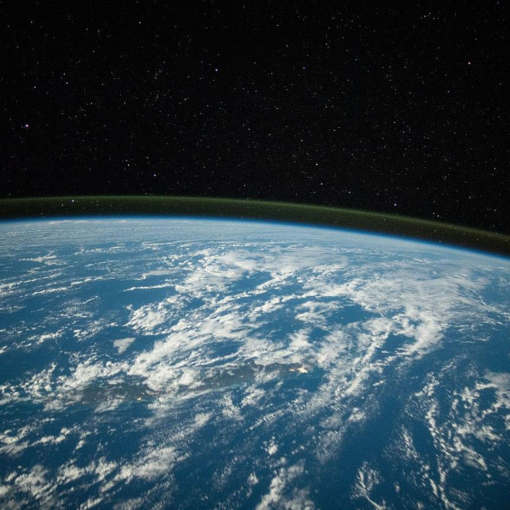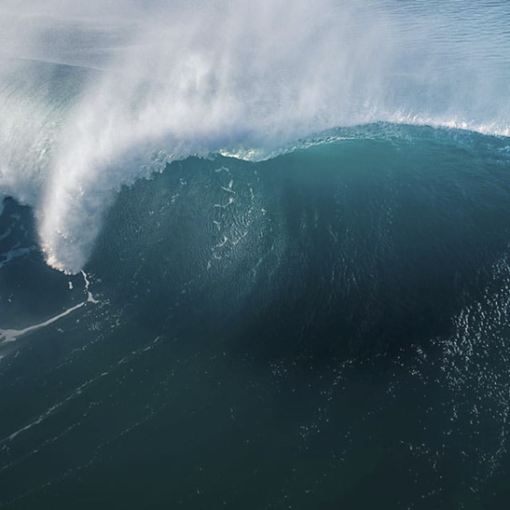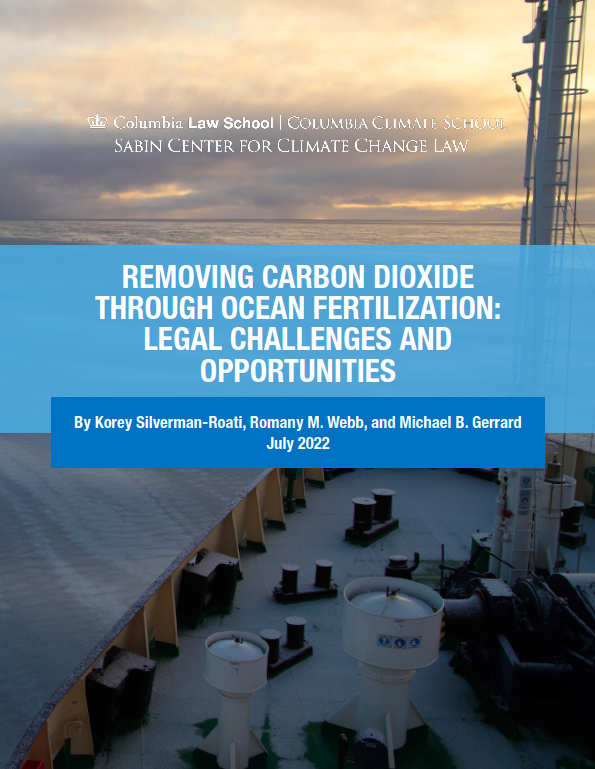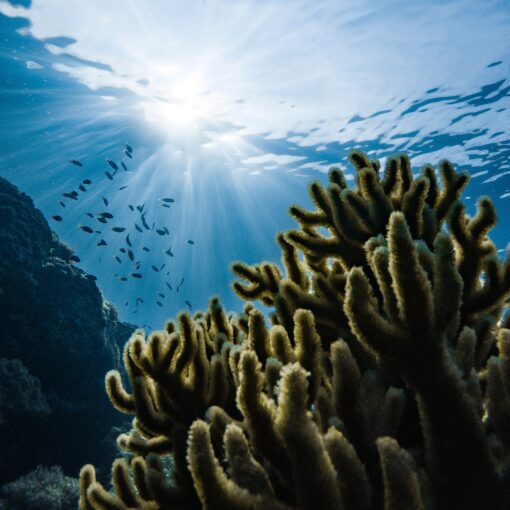By Korey Silverman-Roati and Romany M. Webb
 The Sabin Center today released the second in a series of white papers discussing legal issues associated with different ocean-based carbon dioxide removal techniques. Today’s paper focuses on seaweed cultivation—i.e., the growing of kelp and other macroalgae which may be harvested for food, bioenergy, or other uses or sunk in the ocean to sequester the carbon it contains. The first paper in the series discussed ocean alkalinity enhancement for carbon dioxide removal.
The Sabin Center today released the second in a series of white papers discussing legal issues associated with different ocean-based carbon dioxide removal techniques. Today’s paper focuses on seaweed cultivation—i.e., the growing of kelp and other macroalgae which may be harvested for food, bioenergy, or other uses or sunk in the ocean to sequester the carbon it contains. The first paper in the series discussed ocean alkalinity enhancement for carbon dioxide removal.
To date, most carbon dioxide removal research has focused on terrestrial-based approaches, but they often have large land requirements and may present other risks and challenges. This has led to increased interest in using the oceans which have already absorbed about 30% of human carbon dioxide emissions since the Industrial Revolution. Carbon storage in the oceans could be further increased through large-scale seaweed cultivation. Like terrestrial plants, seaweed uptakes carbon dioxide from the atmosphere as it grows and stores it in biomass. To offset emissions, cultivated seaweed could be used to replace more greenhouse gas-intensive products, or could be sunk in the deep sea. If the seaweed is sunk towards the deep-sea floor, the biomass-stored carbon may be sequestered for centuries to millions of years.
Seaweed cultivation may also have climate adaptation and environmental co-benefits. Dense seaweed areas may be able to protect other organisms from ocean acidification, can provide oxygen-rich habitats, and can buffer against coastal erosion. However, because large-scale cultivation has not been implemented in many regions, its ultimate environmental impacts, including potential harms to local ecosystems, are not well understood.
The Sabin Center’s new white paper analyzes the international and U.S. legal frameworks applicable to research and deployment of seaweed cultivation for the purposes of carbon dioxide removal and storage. While there are currently no international or U.S. federal laws dealing specifically with seaweed cultivation, various general environmental and other laws could apply to projects. At the international and regional levels, these include the Convention on the Prevention of Marine Pollution by Dumping of Wastes and Other Matter, and the Protocol to that Convention, the Convention on Biological Diversity, the United Nation Convention on the Law of the Sea, and the European Union Marine Strategy Framework Directive.
Potentially applicable U.S. federal laws include the Outer Continental Shelf Lands Act, the National Environmental Policy Act, the Endangered Species Act, the Coastal Zone Management Act, the Marine Protection, Research, and Sanctuaries Act, and the Clean Water Act. Projects may also be subject to state aquaculture permitting laws and state and federal requirements to consult with Native American tribes and other stakeholders. The application of these laws will depend on, among other factors, the offshore location of the project, the materials and technology used, and whether the project makes use of the sea floor. None of these laws expressly prohibit seaweed cultivation in U.S. waters, but many impose permitting, environmental review, and other requirements that projects would have to meet.
Read the full paper here.
Related work: The Sabin Center is preparing a series of white papers examining legal issues associated with carbon dioxide removal and storage. Previous papers have discussed the legal framework for carbon removal via ocean alkalinity enhancement (OAE), enhanced weathering, as well as carbon storage in the sub-seabed off the east and west coasts of the United State and the west coast of Canada. For more information about this and other related work, visit our website here.
In January 2021, the Sabin Center released a paper discussing key legal challenges and opportunities associated with both OAE and seaweed cultivation for the purposes of carbon dioxide removal. This paper builds on that prior work. It focuses solely on seaweed cultivation and includes additional analysis of applicable customary international law, state permitting and other requirements, and issues relating to tribal rights (among other additions). Separate papers analyzing the international and domestic legal frameworks for artificial upwelling and downwelling and ocean fertilization for carbon dioxide removal are currently in development. This work is generously supported by ClimateWorks Foundation.
This is test biographical description.




